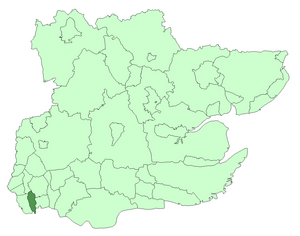East Ham (parish)
| East Ham | |
|---|---|
 East Ham within Essex in 1961 |
|
| Area | |
| • 1894 | 3,324 acres (13.5 km2) |
| • 1965 | 3,324 acres (13.5 km2) |
| Population | |
| • 1901 | 96,008 |
| • 1961 | 105,682 |
| History | |
| • Created | 1894 |
| • Abolished | 1965 |
| • Succeeded by | London Borough of Newham |
| Status |
Local government district (1878—1894) Urban district (1894—1904) Municipal borough (1904—1915) County borough (1915—1965) |
| • HQ | East Ham |
| • Motto | Progressio cum Populo (Progress with the people) |
 |
|
| Subdivisions | |
| • Type | Parishes |
| • Units |
East Ham (1878—1965) Little Ilford (1886—1900) |
East Ham was a local government district in the far south west of Essex from 1878 to 1965. It extended from Wanstead Flats in the north to the River Thames in the south and from Green Street in the west to Barking Creek in the east. It was part of the London postal district and Metropolitan Police District.
East Ham Local Government District was created in 1878, when the parish of East Ham adopted the Local Government Act 1858, and formed a local board of nine members to govern the area. In 1886 the local government district was extended to include the civil parish of Little Ilford, and the board was increased to 12 in number. The Local Government Act 1894 reconstituted the area as an urban district, with an elected urban district council of 15 members replacing the board. In 1900 Little Ilford parish was abolished and its area absorbed into an enlarged East Ham.
On 27 August 1904 East Ham was granted a charter of incorporation constituting the town as a municipal borough. A new town council consisting of a mayor, six aldermen and eighteen councillors replaced the urban district council. The four wards of the urban district were replaced by six new wards (Beckton & North Woolwich, Central East, Central West, Manor Park, Plashet East, Plashet West), each returning three councillors and one aldermen.
...
Wikipedia
